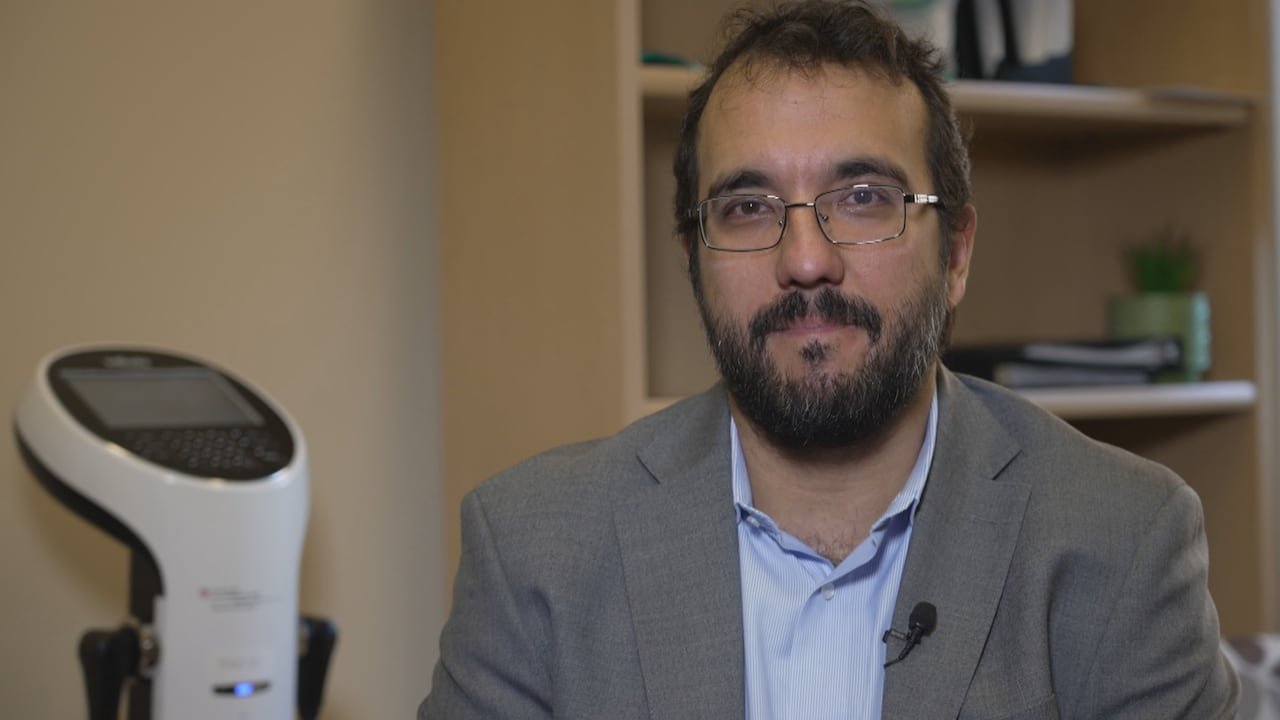Ever since he got out of the navy, Michael McCluskey, 61, was known as a heavy drinker. He averaged between four to five drinks a night. Even having up to 10 drinks was “not an unusual event,” he says.
But all that changed four years ago, when he started taking Ozempic for weight loss. Along with 110 pounds, McCluskey lost his appetite for alcohol — quickly and simply. Nowadays, he drinks twice a year — when he hosts sci-fi conventions.
“It’s just like a switch flipped in my head,” said the Dartmouth, N.S., man. “There’s no desire. That’s just it.”
His story isn’t unique. Studies combing through past patient data have made a similar link between glucagon-like peptide-1 receptor agonist drugs (GLP-1 RAs) like Ozempic, and a loss of appetite for more than just food. GLP-1 RAs have been linked with people wanting and consuming less of all kinds of vices, whether it’s alcohol, nicotine, cannabis or opioids. One study looking into social media posts suggested people cut down on habits like caffeine use and compulsive shopping, too.
Scientists don’t have a clear explanation for why drugs like Ozempic appear to lessen cravings for vices, including for addictive substances. But they have some ideas that they’re testing — some here in Canada, where any advance would help significantly, as the country faces a growing opioid crisis.
Emerging research
There haven’t been many randomized clinical trials — which are considered the gold standard for evaluating medical claims — on whether GLP-1 RAs reduce addictive behaviours.
There have only been two such trials studying their impact on alcohol addiction, none for opioid addiction and two for nicotine addiction, according to a recent review published in the Journal of the Endocrine Society.
Christian Hendershot, a California-based Canadian researcher, co-authored one of those randomized controlled trials, published recently in JAMA Psychiatry, looking at alcohol consumption.
From gambling and alcohol to pornography, Ozempic and GLP-1 drugs could soon be used to cure all manner of addictions.
In the study, he divided 48 heavy drinkers into two groups. One received a weekly shot of semaglutide, the active ingredient in drugs like Ozempic and Wegovy, while the other was given a placebo. Then, he tracked how much alcohol the two groups consumed, both at home and in a lab setting.
“The semaglutide group consumed significantly less alcohol,” said Hendershot, who previously held a Canada Research Chair in Alcohol Use Disorders, and is now a professor at the University of Southern California.
The finding is especially striking, Hendershot says, because the subjects were not looking to cut back on drinking.
“The next step is to conduct the clinical trials that can establish that these medications are safe and effective in clinical populations,” he said.
Still, Hendershot is urging caution until there are larger, longer-term studies.
A blunted dopamine rush
Some scientists are studying the brain’s reward system to try and understand the mechanism at play, which may explain why drugs like Ozempic may reduce cravings or desire.
A key part of that system is dopamine, a neurotransmitter that’s released when you do something pleasurable, like eating a bite of cake or wrapping up a satisfying workout. That release is essentially telling you, “This feels great!”
It also encourages you to do it again, giving you the motivation to repeat the action. And while the dopamine rush you get after exercising might not be the same as the one you get after eating chocolate, there are some similarities in the reward circuitries, says Dr. Rodrigo Mansur, a psychiatrist and researcher at Toronto Western Hospital.
“There are, of course, meaningful differences in how [different rewards] are regulated. But they do share those underlying neural circuits,” Mansur said.

Drugs like Ozempic can affect those neural circuits, he said.
GLP-1 RAs appear to blunt the reward mechanism, the dopamine rush that comes with a reward, say researchers like Mansur. That could change how people feel desire, pleasure and motivation.
Mansur just finished a Phase 2 randomized clinical trial looking at how GLP-1 RAs affect motivation among 72 people struggling with depression. He’s looking to find out how hard patients who are taking the drug are willing to work for a cash prize, by measuring how much energy they burn as they take a cognitive test. He measures the energy spent with a metabolic cart, which analyzes the body as it inhales oxygen and exhales carbon dioxide.
The brain is the most metabolically demanding organ in the whole body, meaning that it consumes about 25 per cent of the body’s energy. That’s why Mansur thinks his study can quantify people’s motivation, and whether GLP-1s change that.
He is studying the drugs to see how they affect patients with depression, who already tend to suffer from low energy and motivation. But he also wants to learn more about how GLP-1 RAs affect motivation and pleasure, which he hopes could be helpful for people with mood disorders — and which could have further implications in treating other illnesses, like addiction.
“We need to understand better what drives these problems with motivation in people with depression, and we need better treatments for it.”
Potential for addiction treatment
Addiction researchers in Canada also say they’re excited by the potential of GLP-1 RAs in their practice. Substance use is a growing and complex problem across the country: about 15 per cent of people surveyed by Statistics Canada were at moderate to high risk of alcohol use disorder in 2023; for cannabis, it was 13 per cent. Since 2016, there have been almost 54,000 opioid overdose deaths.
For that reason, researchers say they’re hungry for more evidence.
The working hypothesis — that GLP-1 RAs can dull the dopamine spike that follows the consumption of an addictive drug — is exciting, because it tackles the “underlying neural currency for all addictive behaviours,” says James MacKillop, chair of the Peter Boris Centre for Addictions Research at McMaster University.

“The existing medications we have are generally drug-specific: opioid drugs for opioid-use disorder, nicotine drugs for tobacco-use disorder.”
GLP-1 RAs, in contrast, appear to target the central pathway common to all psychoactive drugs, he says. But MacKillop warns we’re still in the very early days of the research.
‘The hype is outpacing the evidence’
If GLP-1 RAs are effective in treating addiction, researchers must also figure out whom they are effective for — and that’s not yet clear, says Dr. Sanjeev Sockalingam, chief medical officer at the Centre for Addiction and Mental Health (CAMH) in Toronto.
The centre has proposed several trials looking at GLP-1 RAs to treat nicotine and alcohol use, he says.
Ruling out whether the drugs can have side effects for those who are struggling with their mental health is also critical — and Sockalingam says while there is some preliminary evidence showing there aren’t significant mental health side effects, he wants to see longer-term studies.
Questions are swirling around the use of semaglutide, commonly sold under the brand name Ozempic, for weight loss. CBC’s Christine Birak explores the risks and benefits of off-label uses of the drug, which is traditionally used to treat Type 2 diabetes.
“We just need to make sure there are no unintended consequences from using these more broadly across conditions,” says Sockalingam, who is cautiously optimistic about the drugs’ potential in treating addiction.
MacKillop agrees — he thinks while GLP-1 RAs are game-changers in many ways, there are very few “free lunches” when it comes to medications. Some of their side effects are already well known, like nausea, vomiting and constipation.
“Almost all medications have some downsides and it takes some time to really be aware of what they are,” he said. He fears that the excitement doesn’t reflect the full reality.
“In a lot of ways these drugs are still unproven,” he said. “The hype is outpacing the evidence.”
The truth is, he says, one drug can’t treat addiction on its own. Building a healthy lifestyle, where people can find pleasure in other things like exercise, hobbies, and friends, is key to treating addiction, he says.
And, he worries, if GLP-1 RAs are an anti-desire drug, they might reduce people’s motivation to maintain those aspects of their lives.
“They may be anti-pleasure or anti-desire drugs. And that’s not necessarily a good thing in terms of promoting a healthy recovery.”



